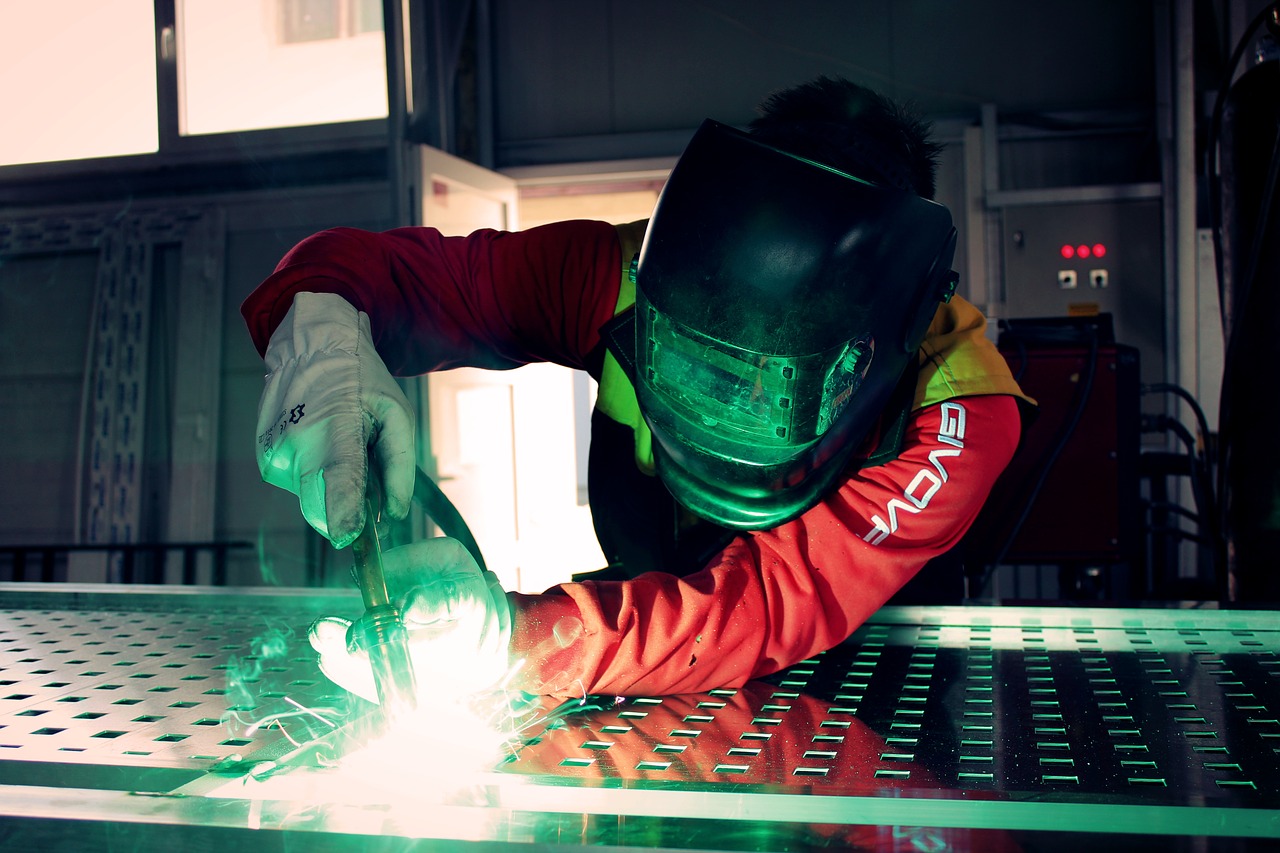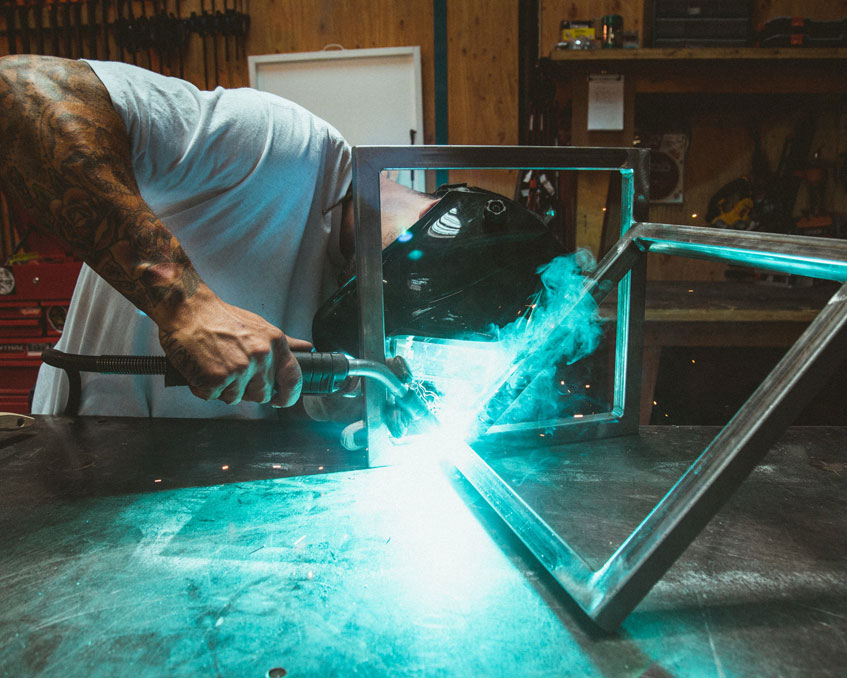Key methods to deal with warping in Montana Mobile Welding and Repair Belgrade
Wiki Article
Typical Welding Fixing Issues and How to Address Them Efficiently
Welding fixings typically run into a series of issues that can endanger the integrity of the final item. Common troubles consist of inadequate infiltration, porosity, and imbalance, to name a few. Each issue provides one-of-a-kind difficulties that call for certain techniques for resolution. Recognizing these problems is essential for welders intending to improve their abilities and outcomes. This conversation will certainly explore these typical welding fixing issues and reliable methods to address them.Insufficient Penetration
Insufficient infiltration happens when the weld metal fails to totally fuse with the base product, resulting in weak joints and potential structural failings. This problem often comes from not enough warmth input, wrong electrode angle, or improper welding rate. Welders may experience poor infiltration because of a miscalculation of the necessary parameters for a details product thickness or type. Furthermore, contamination on the base product's surface can hinder efficient bonding, intensifying the trouble. To deal with insufficient infiltration, welders must ensure proper setups on their equipment and preserve a tidy job surface area. Routine evaluation of welds is suggested to determine any shortages early, permitting timely corrections and the prevention of compromised structural stability in bonded assemblies.Porosity
Porosity is a common defect in bonded joints that materializes as tiny gas bubbles trapped within the weld steel. This problem can jeopardize the stability of the weld, causing decreased strength and possible failure under tension. Montana Mobile Welding and Repair Welding. Porosity generally emerges from contamination, dampness, or incorrect welding strategies, which permit gases to leave right into the liquified weld swimming pool. To attend to porosity, welders need to assure proper surface prep work, keep a tidy workplace, and utilize suitable welding criteria. Furthermore, choosing the right filler product and shielding gas can alleviate gas entrapment. Regular inspection and screening of welds can assist identify porosity early, ensuring timely restorative actions are taken, thus maintaining the quality and reliability of the welded structureImbalance
Imbalance in welding can occur from different factors, including improper arrangement and thermal expansion. Comprehending the source is essential for effective resolution. Several correction strategies are readily available to straighten components and ensure architectural stability.Reasons for Misalignment
Welding misalignment typically originates from a selection of underlying problems that can jeopardize structural stability. One primary cause is inappropriate fit-up of components before welding, which can lead to spaces and unequal surfaces. Variations in thermal expansion during the welding process can also cause distortion, specifically if the products being signed up with have different coefficients of expansion. Furthermore, inadequate securing and fixturing might fall short to hold parts firmly in position, causing activity throughout welding. Inadequately maintained tools, including welding equipments and devices, may introduce incongruities in the weld bead, more adding to misalignment. Driver error, stemming from inadequate training or experience, can additionally play a substantial duty in producing misaligned welds.
Modification Techniques Offered
Resolving imbalance successfully calls for a combination of corrective methods customized to the certain problems handy. One usual method is using components or jigs to hold elements in the correct placement throughout welding, guaranteeing consistent alignment. Additionally, preheating the products can aid lower distortion and enhance fit-up. For significant imbalance, mechanical adjustment methods, such as utilizing hydraulic jacks or clamps, can be utilized to deal with the position prior to welding. Post-weld heat therapy may also be required to soothe tensions brought on by misalignment. Mindful evaluation and adjustment throughout the setup stage can stop misalignment problems from ending up being significant problems, promoting a smoother welding procedure and boosting general structural honesty.Distortion
Distortion is an usual difficulty in welding that can develop from numerous factors, including uneven cooling and heating. Recognizing the causes of distortion is crucial for carrying out efficient avoidance methods. Resolving this problem not only boosts architectural integrity however additionally improves the general high quality of the weld.Reasons for Distortion
When subjected to the intense warmth of welding, products frequently undergo adjustments that can lead to distortion. This phenomenon mainly develops from thermal growth and contraction during the welding procedure. As the weld location warms up, the product increases; upon cooling, it gets, which can produce internal tensions. In enhancement, irregular home heating throughout a workpiece can exacerbate these stresses, causing warping or bending. The sort of product additionally plays a significant role; steels with differing thermal conductivity and coefficients of growth might respond in a different way, resulting in uncertain distortions. Poor joint design and inadequate fixturing can add to imbalance during welding, raising the likelihood of distortion. Understanding these reasons is essential for reliable welding repair service and avoidance strategies.Prevention Techniques
Reliable prevention strategies for distortion throughout welding emphasis on regulating heat input and guaranteeing correct joint style. Preserving a consistent heat input aids to minimize thermal growth and tightening, which can bring about distortion. Using methods such as pre-heating the work surface can additionally lower the temperature level gradient, advertising uniform home heating. Furthermore, choosing appropriate joint layouts, such as T-joints or lap joints, can enhance security and lower tension focus. Carrying out proper fixturing to protect the work surfaces in position further aids in maintaining positioning throughout the welding procedure. Ultimately, staggered welding series can disperse heat a lot more evenly, avoiding local distortion. By using these strategies, welders can significantly lower the chance of distortion and improve the general high quality of their welds.Splitting
Cracking is an usual concern experienced in welding repair services, typically arising from numerous factors such as inappropriate air conditioning rates, material selection, or insufficient joint preparation. The incident of fractures can greatly compromise the integrity of the weld, causing possible failings throughout procedure. To resolve this concern, welders have to initially assess the source, making certain that products work and suitably picked for the details application. In addition, managing the air conditioning price throughout the welding process is crucial; rapid air conditioning can generate stress and anxiety and bring about fracturing. Appropriate joint style and preparation additionally add to decreasing the danger. Carrying out these methods can welder fabricator boost weld top quality and toughness, eventually minimizing the probability of cracking in ended up weldments.
Incomplete Combination
A considerable concern in welding repair services is incomplete combination, which happens when the weld metal does not effectively bond with the base product or previous weld passes - Montana Mobile Welding and Repair Belgrade Fabrication. This flaw can lead to weaknesses in the joint, potentially endangering the integrity of the welded structure. Variables adding to incomplete fusion consist of inadequate warmth input, improper welding technique, and contamination of the surface areas being signed up with. To resolve this issue properly, welders ought to guarantee proper pre-weld cleaning and surface preparation, as well as change their welding specifications to attain adequate infiltration and fusion. Routine evaluation during the welding procedure can likewise assist recognize incomplete combination early, permitting timely corrective measures to boost the general quality of the weldOverheating
While welding repairs can improve structural integrity, overheating presents a substantial obstacle that can bring about product destruction. Excessive heat throughout welding can alter the mechanical properties of metals, resulting in reduced strength, increased brittleness, and warping. This phenomenon is particularly crucial in high-stress applications where structural dependability is critical. Identifying overheating can involve aesthetic evaluations for discoloration or distortion, along with monitoring temperature during the welding process. To alleviate the dangers related to getting too hot, welders should employ appropriate methods, such as managing heat input, readjusting travel speed, and making use of appropriate filler materials. Additionally, implementing pre- and post-weld warmth treatments can help recover material buildings and enhance the total high quality of the fixing, making sure long-term performance and safety and security.Often Asked Questions
What Are the Typical Indications of a Welding Problem?

How Can I Evaluate My Welds for High quality?
To test welds for quality, one can utilize aesthetic assessments, ultrasonic testing, and radiographic techniques. Each method assures architectural stability, recognizes defects, and validates adherence to specified criteria, inevitably improving the dependability of the welded joints.What Security Precautions Should I Take While Welding?
When welding, one should focus on safety and security by using proper personal safety equipment, making certain correct air flow, protecting flammable products away, preserving a clean office, and being aware of environments to stop injuries and accidents.Can I Fix a Weld Without Redoing the Entire Joint?
Fixing a weld without renovating the whole joint is feasible, depending on the damages (Montana Mobile Welding and Repair best mig welder Fabrication). Techniques such as grinding, including filler product, or using a welding procedure can effectively resolve certain defects while preserving the surrounding structureWhat Tools Are Crucial for Effective Welding Fixes?
Essential devices for reliable welding fixings consist of a welding machine, cable brush, mill, protective gear, clamps, and filler products. address Each device plays an important role in making certain quality and safety and security throughout the fixing process. Porosity normally develops from contamination, dampness, or incorrect welding methods, which allow gases to run away right into the liquified weld swimming pool. Poorly kept equipment, consisting of welding devices and devices, may present incongruities in the weld bead, further adding to imbalance. When subjected to the extreme warm of welding, products usually undergo adjustments that can lead to distortion. Fracturing is a typical concern encountered in welding repair work, often resulting from different aspects such as incorrect cooling rates, material selection, or poor joint preparation. A considerable problem in welding repair services is incomplete combination, which takes place when the weld steel does not sufficiently bond with the base material or previous weld passes.Report this wiki page